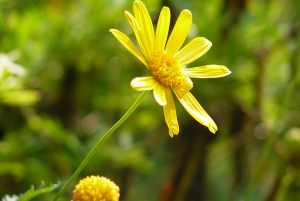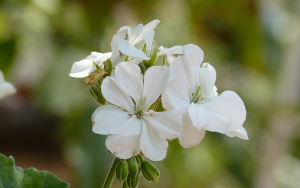 Most people probably think of honey and beeswax when they think of bees. Personally, I always think about summer, pears and bee stings. When I was younger I hated bees because every single summer I was stung by a bee while on my grandparents farm. It always happened while I was picking pears fresh off the tree. My grandma would say: “You’re fine”, pick me up and say, “lets go make you a mud pack”. And just like that she had mixed up some dirt and water and slapped it on the spot where I was stung. Amazingly it worked, it took the sting away almost immediately. I managed to get through every summer with just one or two bee stings.
Most people probably think of honey and beeswax when they think of bees. Personally, I always think about summer, pears and bee stings. When I was younger I hated bees because every single summer I was stung by a bee while on my grandparents farm. It always happened while I was picking pears fresh off the tree. My grandma would say: “You’re fine”, pick me up and say, “lets go make you a mud pack”. And just like that she had mixed up some dirt and water and slapped it on the spot where I was stung. Amazingly it worked, it took the sting away almost immediately. I managed to get through every summer with just one or two bee stings.
It all start with a ‘Sting’
A few years ago I got stung by a bee once again. This time on my thumb while taking out the compost. My whole hand and arm swelled up like a balloon and I was in a little bit of a panic, since I never had a reaction to bees before. I went up to the hospital and they said your fine, just a minor allergy. Since then, I began my fear of bees, I would run, duck, swat at them and kill them at any chance I could. That was until I read article after article about how crucial our existence depends on the existence of bees.
Pollinators
Bees are by far our most important pollinator on Earth! The process of pollination keeps our world running. Pollination is the movement of pollen grains between flowers that leads to plant reproduction and growth. Eighty-eight percent of all plants and foods we eat, such as nuts, fruits, vegetables and herbs depend on pollination for fertilization. All creatures that eat plants, including us, depend on pollinators. Plants are the base of our food chain, the anchor to our soil to prevent erosion and they fuel the nutrient cycle. Our planet is supported on the wings of our bees and also other pollinators.
800 Types of Bees in Canada
There are more than 800 types of bees that are native to Canada! The honey bee is not native to Canada; it was actually imported from England.
Canadian Bees Don’t Produce Honey?
Bees native to Canada do not produce honey, but provide us with the invaluable service of pollination and best of all the majority of them do not sting. Although their service is invaluable to us everything is measured by money, the value of pollination provided by our bees for Canadian crops is estimated at 1.2 billion a year.
All kinds of Shapes and Sizes
The hundreds of bee species come in all sizes, the smallest bee is the size of a head of a pin, while the biggest is the bumble bee. Some live below ground, while others live in hives above ground. Bees that nest in the ground improve soil texture, increase water movement and mix nutrients, this occurs from the bees tunneling. Every single bee species is beneficial to our plants in some way.
Bees are HARD Workers
Bees are very hard workers.
Female mason bees will visit as many as 17 flowers per minute.
Now we know where the saying “busy as a bee” came from. Bees thrive in your backyard, community or patio and on mixed farms where more then one crop is planted. They also love to live in urban settings where there are short flight paths and a variety of different plants and flowers.
Honeybees aren’t the only bees disappearing
Honeybees are not the only bee disappearing. Native bee species are also declining at a rapid rate. This is mostly due to habitat loss, degradation, GMO crops, high fructose corn syrup and herbicide and pesticide use.
Studies have linked crop pesticides and herbicides, as well as high fructose corn syrup, to CCD or Colony Collapse Disorder.
Pesticides and Bees Health
Even low levels of pesticides can affect bee longevity, memory, navigation and foraging abilities.
Chemicals called systemic pesticides are not just applied to leaves, but are sprayed on seeds or entrenched in the soil. This allows for the poison to become part of the plant. Honeybees then eat the plant and bring the pesticides back to the hive in the form of pollen and nectar and store it in their honeycomb. When future generations of bees dip into the reserves, they ingest toxins that target their central nervous system and can even kill them.
The yellow-banded bumblebee and the rusty-tinged bumblebee are two native bees in Canada that are disappearing. Without these important bees we will face a biodiversity crisis.
How we can do our part to help
What can we do?
No more pesticides!
First, we can stop using harmful pesticides to keep our lawns and gardens looking perfectly manicured. Lucky for us who live in Ontario and Quebec, many pesticides, known as cosmetic pesticides, have been banned. This is to protect pollinators but also to help protect the health of our kids, pets and ourselves. Some large retail stores have voluntarily taken these harmful chemicals off the shelves.
Create bee homes
Next, we can create hospitable homes in our garden for these beneficial insects, this will also help to keep them from moving into our houses.
Having bees present in your garden can triple the yield of fruits and veggies. It doesn’t even have to be a huge garden, even if you have a tiny flower pot on your patio or balcony it can provide a valuable pollinator habitat.
Everything you do can make a huge difference, as bees do not require much room for nesting and foraging. Along with planting flowers to attract bees you can also build a bee home and a bee bath, and if you DO get stung by a bee I have listed some home-remedies for stings later in this article.
Create a welcoming home for our bees
Build a bee home:
- You will need a block of untreated wood.
- Drill holes in the block, spaced 3/4″ apart. For leafcutter bees, the holes should be 1/4″ wide and 2 1/2 -4″ deep. For mason bees, drill 6″ deep, 5/16″ wide holes. Do not drill completely through the block.
- Place the block on the side of a house or shed, or mount it securely on a fence post or pole at the edge of the yard.
- Attach an overhanging roof piece to the block.
- It should face east or south and be placed at eye level.
- Dig down below your garden soil adjacent to your bee house until you expose the clay layer, or keep a bowl of moist clay near your bee house for the masons to use as construction material.
- During the winter, you can take your box down and place it in an area like a shed to protect the larvae from the elements.
- You can also paint the wooden house a bright colour with an exterior zero-VOC paint. If you have more then one home, make sure they are different colours. The bees will fly around taking mental snapshots of their potential new home, but eventually realize this is a great place for a new home.
It may take a full season for the bees to find your house.
Make a bee bath:
Bees and other insects such as: ladybugs, butterflies, and predatory wasps, all need fresh water to drink, but have a hard time landing in a bird bath without crashing. Making a bath with dry islands in the water to land on is helpful for the important insects.
- Line a shallow bowl with rocks and add water, but do not cover the rocks.
- Place the bath on the ground in your garden.
- If you have a problem with aphids put the bath near the “problem plant” and the beneficial insects will take care of them.
- Refresh the water daily.
Plant food for our bees:
Bees eat two things:
- Nectar (packed with sugar, is the bee’s main source of energy)
- Pollen (which provides proteins and fats)
Native plants attract native bees, while exotic plants attract honeybees.
Choose a variety of plants, and make sure they flower at different times, so that there is always food available for the bees.
Native plants and heirloom varieties are best.
Bee’s have good colour vision, they like:
Plant flowers of a single species in clumps, about four feet in diameter. This will help bees to find them.
‘Attractive’ Plants to Bees:
 Different bees have different tongue lengths. It is important to have a variety of flower shapes, which will benefit a diversity of bees.
Different bees have different tongue lengths. It is important to have a variety of flower shapes, which will benefit a diversity of bees.
These plants attract bees and are native to Canada, they are organized by when they bloom.
Early Season:
Blueberry, Cotoneaster, Crabapple, Cranberry, Crocus, Foxglove, Heliotrope, Hazelnut, Heather, & Primrose.
Mid-Season:
Blackberry, Cat mint, Catnip, Chives, Dahlia, Hyssop, Lavender, Raspberry, Sunflower, & Yarrow.
Late Season:
Aster (perennial), Beggar’s tricks, Borage, Coneflower, Cosmos, Goldenrod, Pumpkin, Sedum, & Squash.
Natural bee sting remedies
1. Grandma’s mud pack
Mix water and dirt, place directly on the sting. It helps to relieve the swelling, stinging and redness. Once the paste has dried and it is feeling better, simply wash it off with cool water.
2. Plantain
Plantain is a common weed that has medicinal properties when it comes to bee stings. Pick the leaves, crush or chew it and then apply to the bee sting and the juice from the leaves will help alleviate the pain of the sting.
3. Garlic cloves
This is a very popular remedy that has shown to relieve the pain of a sting. Crush a garlic clove, press it against the sting and let the juices alleviate the pain.
4. Baking soda and water
This remedy has been around forever. Mix the baking soda and water to form a thick paste then slather it onto the sting. Don’t wash it off. This will help to alleviate the pain of the sting.
5. Calendula
Prepare flowers by crushing or chewing enough of them to get a good juice content and apply to the bee sting. This will help to alleviate the pain of the sting.
Excellent Resources:
http://www.honeycolony.com/article/what-is-monsanto-doing-to-our-bees/
http://www.davidsuzuki.org/what-you-can-do/downloads/Pollinators_fact_sheet.pdf
http://www.davidsuzuki.org/blogs/science-matters/2009/04/if-the-bees-disappear-well-all-be-stung/
Have you found a new-found love with bees? Share your comments below and let us know what you thought of this article and all these tips and tricks. Also, feel free to use the social media links below to pass on this information to friends and family so they can all be informed and we can all do our part! For more great articles and healthy recipes, check out Nicole’s site by Clicking Here.
Photo by Giuseppe Salvo. Click Here to visit his photo stream.


